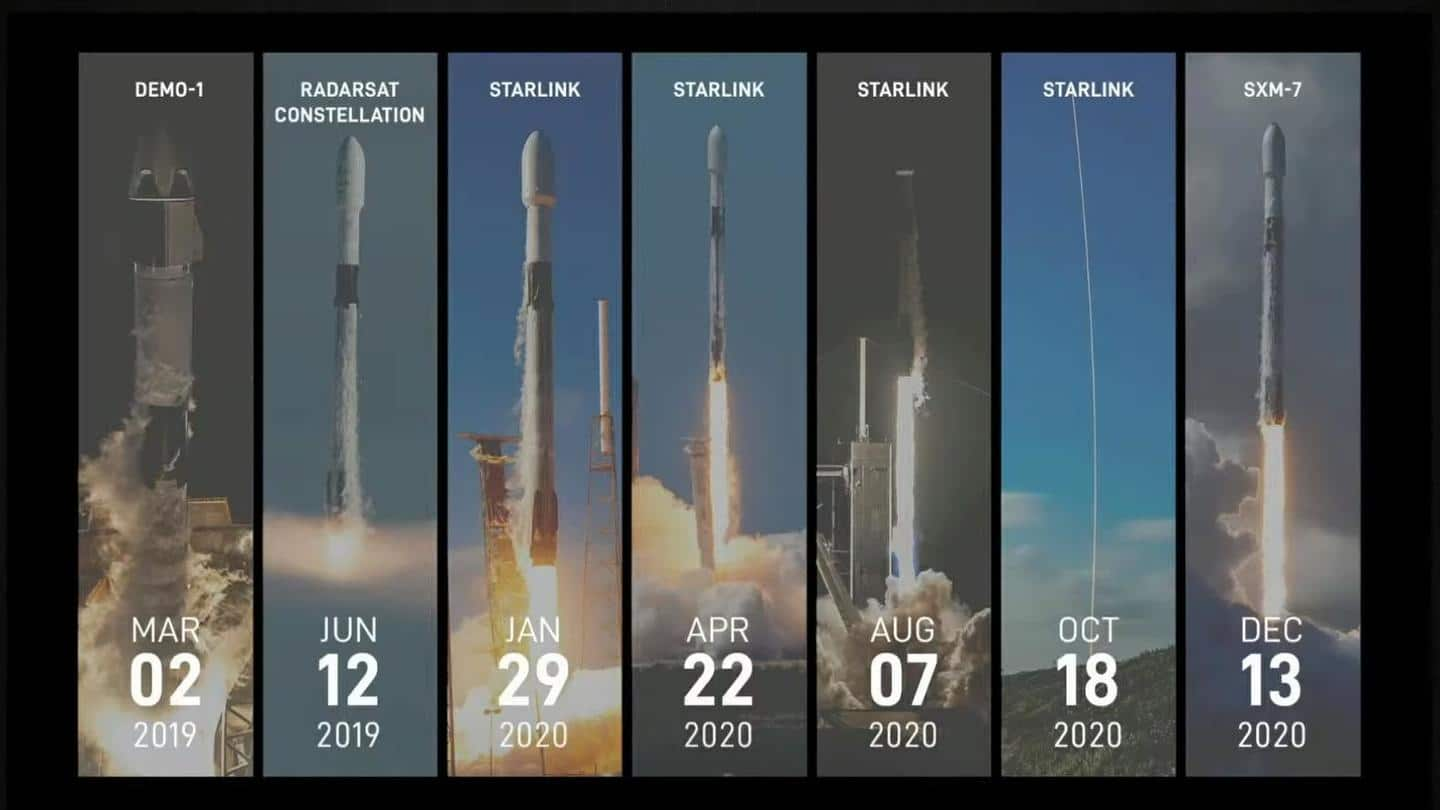
SpaceX Falcon 9 rocket launches 60 Starlink satellites into orbit
What's the story
SpaceX fired up its Falcon 9 rocket for the eighth time launching multiple Starlink satellites into orbit on Wednesday.
The mission put 60 of the company's internet satellites into low Earth orbit after a delay of two days owing to poor weather.
This launch now adds 60 Starlink satellites to an existing fleet of 895 reported by the company in November last year.
Space recycling
Falcon 9 booster returns successfully; Lands on drone ship
Displaying SpaceX's capability to reuse space delivery vehicles, the Falcon 9's first stage returned to Earth nine minutes after takeoff.
The landing zone happens to be SpaceX's drone ship dubbed Just Read the Instructions, which is designed to ferry the returned rocket stage back to port for refurbishing.
The quirky named ship is one of the two automated seacrafts assigned to the task.
Refurbished
B1051 booster completes record-setting eight successful flights
The rocket involved in this launch is special. Codenamed B1051, it comprises one of two record-setting boosters in SpaceX's Falcon 9 fleet.
It has completed eight successful flights and delivered its shortest turnaround by completing this flight a little more than a month after its last flight on December 13.
The extreme heat and wear associated with space launches makes intra-flight refurbishing indispensable.
Connectivity
Starlink endeavor hopes to bring cheap internet to the globe
The payload for this Falcon 9 mission constituted 60 Starlink satellites meant for SpaceX's low-cost internet delivery service.
The initiative is targeted at delivering reliable internet service in remote areas where it would otherwise be too expensive or inconvenient to deploy through traditional means.
The company plans to put 12,000 Starlink satellites in low Earth orbit to blanket the globe with cheap internet connectivity.
Space workhorse
From resupplying ISS to private satellite launches
The B1051's past achievements span over a variety of space payloads, including ferrying an un-crewed Crew Dragon spacecraft to the International Space Station in 2019.
Thereafter, it completed successful missions deploying Earth-observing satellites for Canada, in addition to four separate Starlink missions similar to the current one.
Its last mission involved launching a 7,000 kg satellite for the American music streaming service Sirius XM.